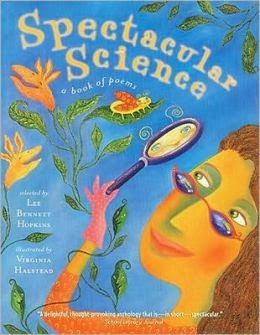- In recent years, health has been one of the major topics in the news, and physical education (PE) goes right along with that. There are many ways to becoming a healthy, active individual, but you need to learn how to do that first, and that's where this genre becomes effective. There are books for every topic of health there is (germs, senses, diseases, vaccines, healthy foods, etc.), and the same goes for PE (sports, running, limited screen time, etc). This genre is one of the utmost important for young readers because their health, and the health of those around them is what will shape our future.
Criterion for Quality and Selection:
- My most important criterion for selection of this genre is accuracy. Advancements are constantly being made in the field of health and books should reflect those changes. We want to make sure that the information presented to the students is up-to-date and correct to enhance the students' learning experiences.
- The purpose of the text would be my second criterion for selecting health texts. There are so many different categories that fall under the spectrum of health (vaccines, diseases, drugs, the body, etc.). When introducing these texts to students we want to make sure they are fulfilling the outcome of the lesson and are beneficial to the students' education.
Use in the Classroom:
- Promoting healthy lives, is of the utmost importance, and the main reason for using this genre in the classroom. Students need to know what they can do and eat in order to become a healthy individual, and these books can do that for them.
- A second use for health text in the classroom is to create positive habits for the students at school and at home. We want students to have the knowledge to make healthy decisions and develop healthy habits that will keep sickness away!
- Examples: healthy eating, washing hands (before & after eating and after blowing their nose), covering their sneezes and coughs.
- For PE text, I would use them as an introduction to the activities mentioned in the text. This will build the students knowledge of what they should get out of the activity, and know how to perform it properly before getting started.
- Complex Text Level: 4th - 5th
- Grade Level Span for Read-Aloud:
- 3rd - 4th
- Major Themes:
- History of Vaccines
- Medicines
- Influential Doctors
- Worthy Qualities of Writing:
- Throughout the text there is a timeline that lists important events that were occurring at the same time as the medical advancements.
- During the 1970s the theory of disease germs is accepted and in 1976 the telephone was invented.
- There are a number of great text features:
- The pages are very bright and appealing to the eye of a reader.
- The titles and subtitles are bolded and in a different color for clear shifts in topic.
- Fun facts in boxes off to the sides of the pages, and brief biographies of influential people in the field of vaccines.
- Support Needed:
- Preteaching some of the key medical terms, including antiseptic, infectious, immunity, and bacteria.
Miller, M. (1994). My five senses. New York, NY: Simon & Schuster Books for Young Readers.
- Complex Text Level: Pre-K - Kindergarten
- Grade Level Span for Read-Aloud:
- Kindergarten
- Major Themes:
- Body Awareness
- Using Senses
- Worthy Qualities of Writing:
- The text uses large, bold font that is easy to use, especially for read alouds.
- There are real-life photographs of young children shown doing actions that correlate with the text.
- Use in the Classroom:
- When wanting to make students aware of their surroundings I would use this text to prompt awareness.
- When talking about smell, ask them what they smell on the playground, in the cafeteria, or in the classroom.
- Ask them what they hear when they go to the park, the pool, or the grocery store.
- Support Needed:
- Sounding out some of the multi-syllable words with young students.
- Examples: shadow, popcorn, garbage, secrets, and watermelon.







